Author: Prof. Dr. Christos Rammos
Institution: West German Heart and Vascular Center, Essen University Hospital, Germany
Summary
This presentation analyzes the preliminary results of the Limus Flow randomized controlled trial, comparing the efficacy of Sirolimus and Paclitaxel drug-coated balloons (DCB) in treating lower limb artery disease. Results indicate that Sirolimus is superior to Paclitaxel in reducing postoperative inflammation and enhancing local endothelial function. However, there was no significant difference between the two in 12-month primary patency, target lesion revascularization (TLR), or survival rates.
Comparison of Drug Characteristics
• Sirolimus: Known for its cytostatic and anti-inflammatory properties, with prolonged tissue retention, making it suitable for long-term inhibition of neointimal hyperplasia in the superficial femoral artery (SFA).
• Paclitaxel: Cytotoxic, with rapid tissue absorption and shorter retention, suitable for short-term blood flow restoration applications.
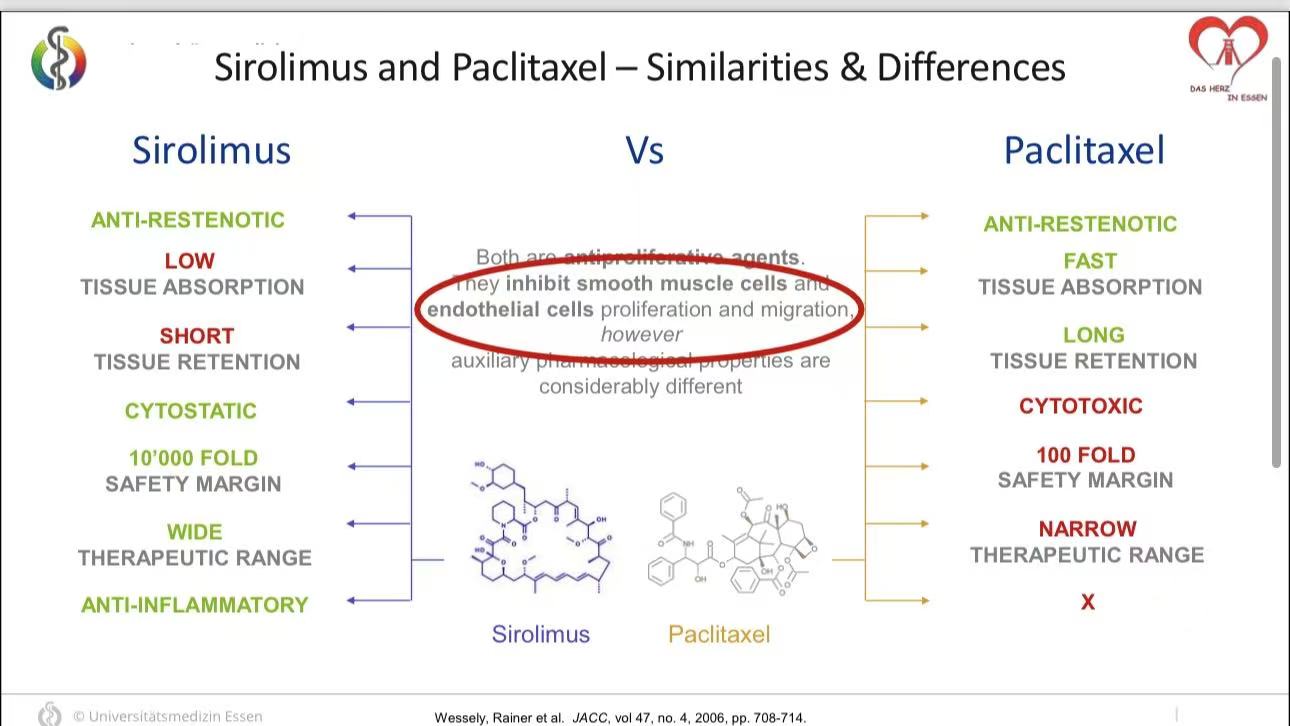
Clinical Trial Design and Key Findings
• Trial Design: Limus Flow is a prospective, parallel-group, randomized controlled trial involving 70 patients with chronic lower limb ischemia, randomized into Sirolimus and Paclitaxel groups, with follow-ups at 30 days, 6 months, and 12 months.
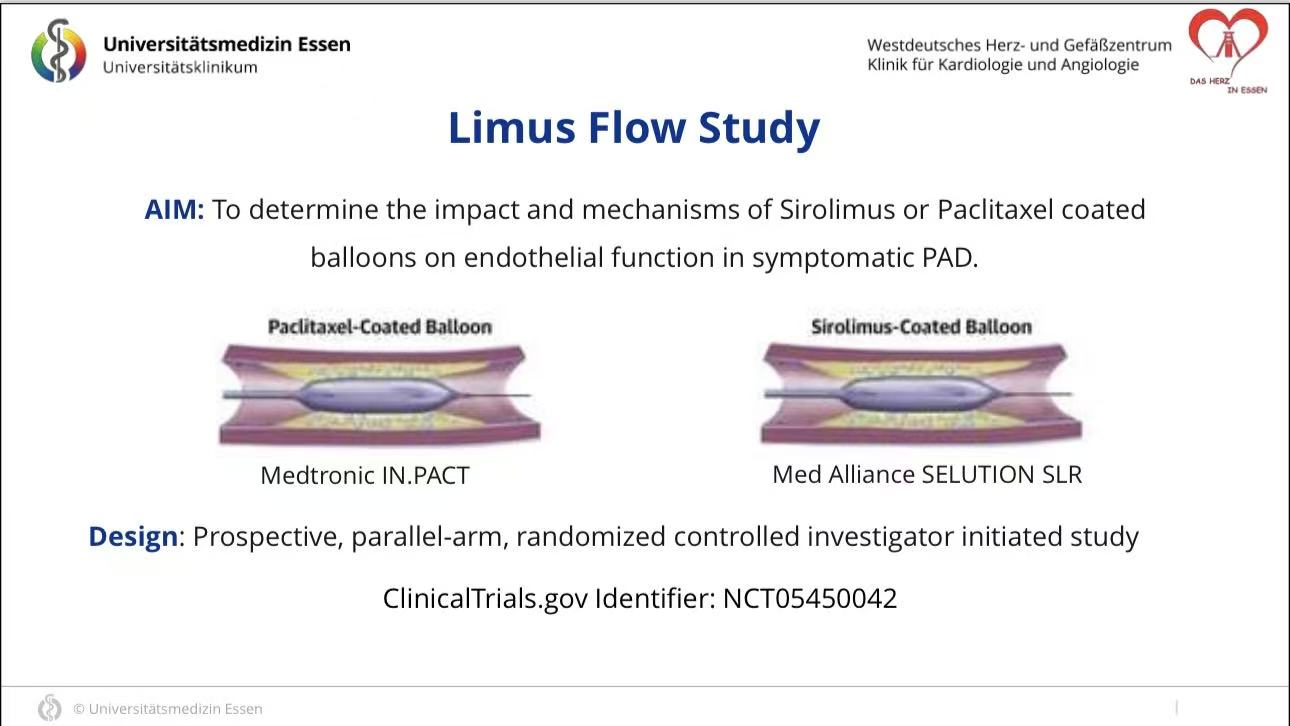

• Inflammatory Response: At 1-month post-procedure, inflammatory markers were significantly lower in the Sirolimus group than in the Paclitaxel group, indicating an advantage in reducing inflammation.
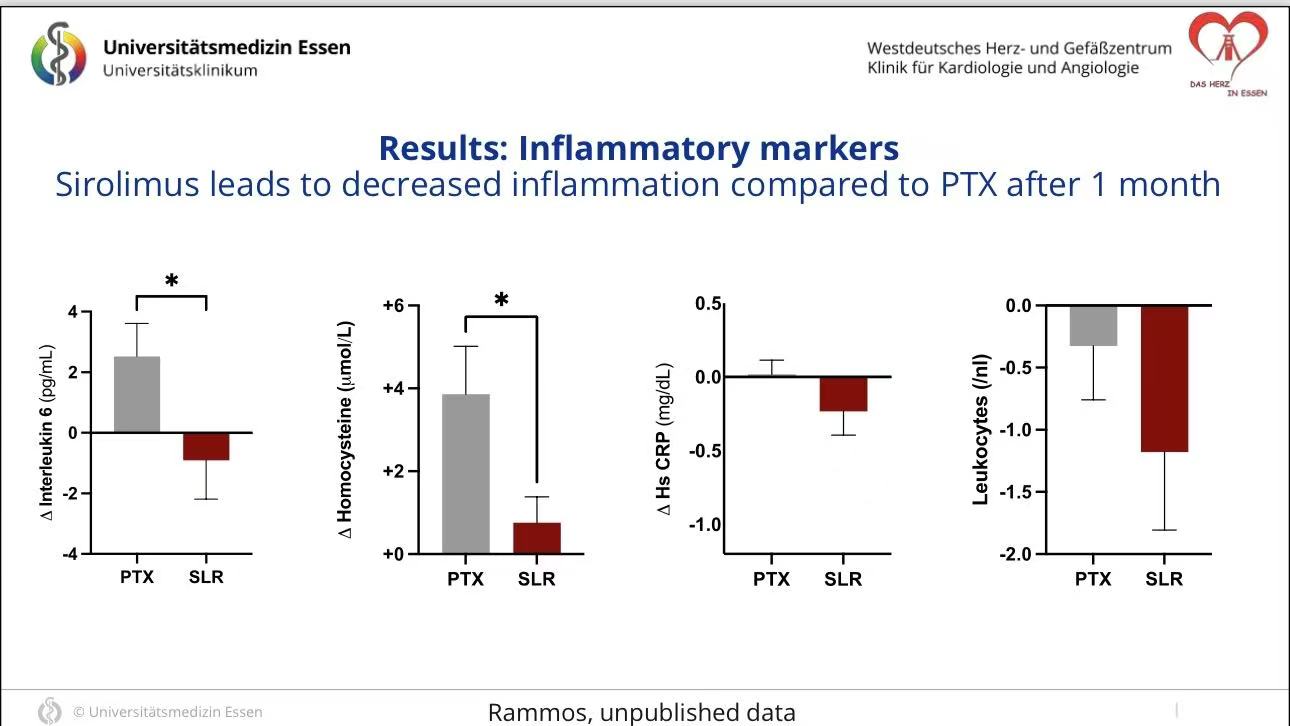
• Endothelial Function Improvement: At 6 months, target vessel endothelial function improved significantly more in the Sirolimus group, while non-target vessel endothelial function showed no notable difference.


12-Month Follow-Up Data
•Primary Patency Rate: No significant difference between Sirolimus and Paclitaxel groups at 12 months (P-value 0.3629).

• Target Lesion Revascularization (TLR): No significant difference in TLR rates between the two groups (P-value 0.5721).
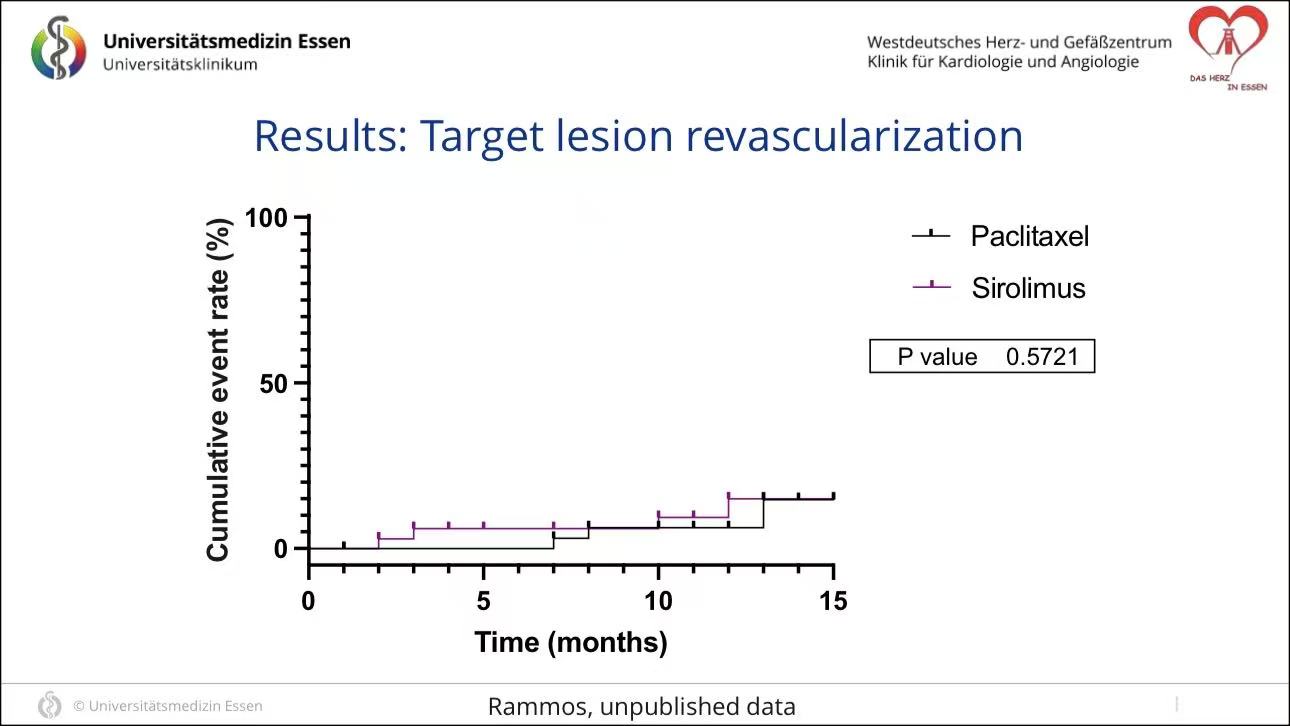
•Survival Rate: Comparable 12-month survival rates for both groups (P-value 0.3831).

Conclusion
1. Sirolimus demonstrated advantages in reducing postoperative inflammation and enhancing local endothelial function but showed no significant differences in 12-month primary patency or survival rates.
2. As a cytostatic agent, Sirolimus’s anti-inflammatory properties offer potential in postoperative management, especially for inflammation-related vascular treatments.
3. Both Paclitaxel and Sirolimus have shown effectiveness, and longer-term follow-up may further reveal differences in their use for peripheral artery disease treatment.
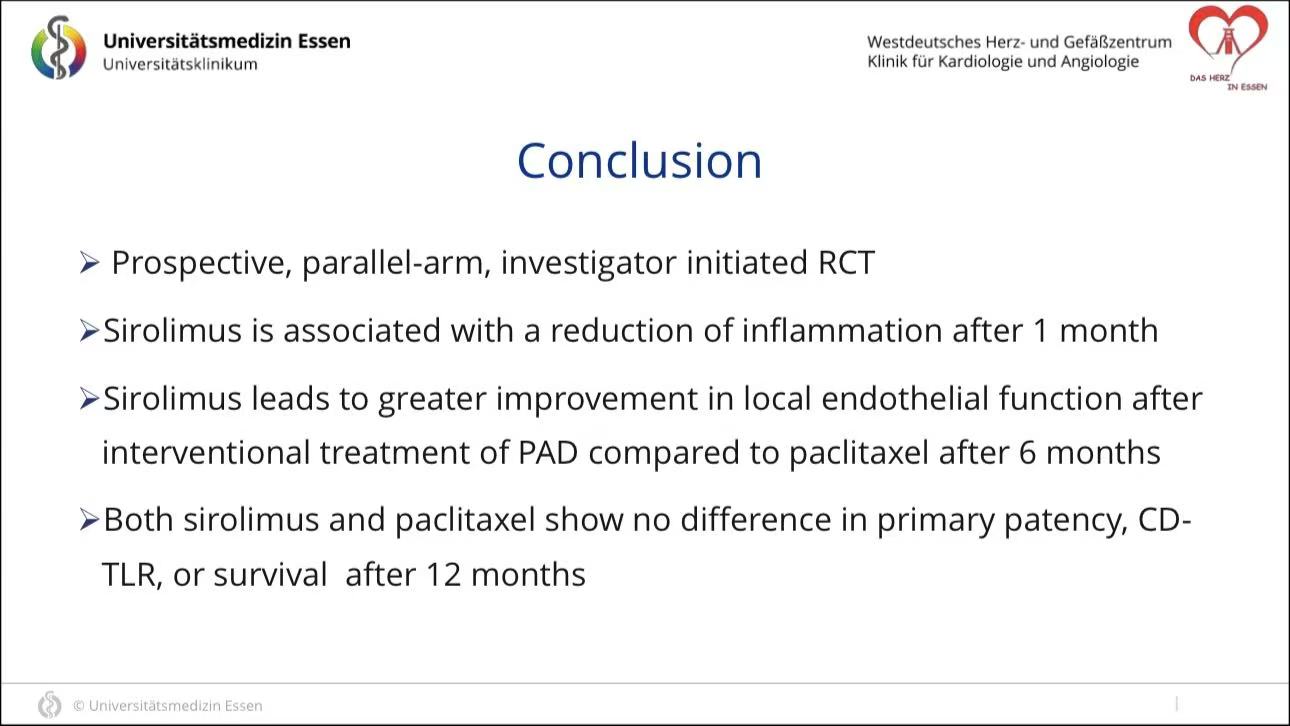
Contact Us
• Email: endovascluar@simtomax.cn
More international information available at:
• Facebook: Vasco Knight
• Instagram: knight_vasco
Let’s safeguard health together and showcase your brilliance to the world!


